
Australian Journal of Chemistry
Volume 66 Number 8 2013
RESEARCH FRONT: SynthCon2

SynthCon is a biennial meeting of the synthetic organic chemistry community founded in 2011. In April 2013, SynthCon2 was held in the Yarra Valley with over 50 attendees from around Australia. In this introduction, papers collected for a special Research Front examining the chemistry of this meeting are outlined.
CH13218A Snapshot of Ionic-Liquid-Tagged Proline-Based Organocatalysts

In the search for novel strategies to increase the catalytic power of organocatalysts, recent efforts have been reported whereby ionic liquid (IL) groups have been incorporated into the organocatalyst scaffold. These efforts, although still emerging, have shown a great deal of promise in application to asymmetric transformations and in their potential to assist in the efficient reuse of the catalysts.
CH13276The Influence of Secondary Structure on Electron Transfer in Peptides
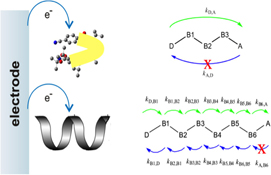
A transition in the mechanism of electron transfer from superexchange to hopping is apparent on transitioning from ill-defined shorter peptides to longer helical peptides.
CH13283Chemical Activation in Azide and Nitrene Chemistry: Methyl Azide, Phenyl Azide, Naphthyl Azides, Pyridyl Azides, Benzotriazoles, and Triazolopyridines
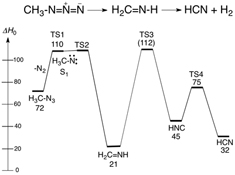
Chemical activation (the formation of ‘hot’ molecules due to chemical reactions) is ubiquitous in flash vacuum thermolysis (FVT) reactions, and awareness of this phenomenon is indispensable when designing synthetically useful gas-phase reactions. Chemical activation is particularly prevalent in azide chemistry because the interesting singlet nitrenes are high-energy intermediates, and their reactions are highly exothermic.
CH13219Synthesis, Structural Characterisation, and Preliminary Evaluation of Non-Indolin-2-one-based Angiogenesis Inhibitors Related to Sunitinib (Sutent®)
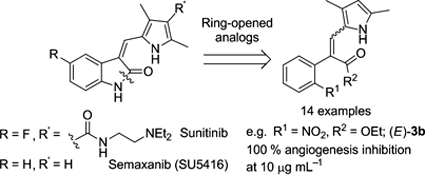
The synthesis and preliminary evaluation of a novel class of angiogenesis inhibitors structurally related to the anticancer drug sunitinib (Sutent®) are described.
CH13270N-Aryl Atropisomerism Induces Facial Selectivity in Benzonitrile Oxide Cycloadditions with Exocyclic Methylene Benzosultams
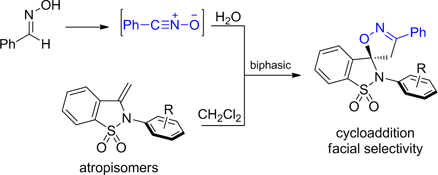
Atropisomeric methylene sultams underwent [3+2] cycloaddition with benzonitrile oxide to give 5-spiro isoxazoline adducts with complete regioselectivity and high facial selectivity.
CH13287Studies on the Enantioselective Synthesis of Carbazolones as Intermediates in Aspidosperma and Kopsia Alkaloid Synthesis
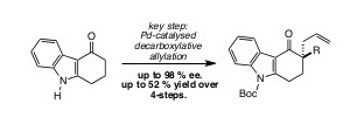
The synthesis of homochiral carbazolones has been investigated by either desymmetrisation of 1,3-cyclohexadione derivatives or palladium catalysed decarboxylative allylation of racemic carbazolone β-ketoesters. The later proved more successful with carbazolones prepared in up to 94 % enantiomeric excess.
CH13277Theoretical Studies for Ozonide Formation During the Ozonolysis of Bicyclic Endoperoxides

Theoretical investigations on the treatment of bicyclic endoperoxides with ozone indicate that the predicted transition states, primary ozonides, and product ozonides are very sensitive to effects of electron correlation and basis set with MP2/6–311G* appearing to be the best level of theory for evaluating such systems.
CH13278Temperature-Responsive Self-Assemblies of ‘Kinked' Amphiphiles

Stimuli responsive self-assemblies are highly desirable for localised release of encapsulated therapeutics. In this work we show the synthesis and physicochemical characterisation of norbornane-derived amphiphiles bearing Tamoxifen at the polar head group. These compounds show a reversible response to variations in temperature and are the basis of continuing investigations into controlled release in a therapeutic setting.
CH133031-(Acyloxy)benzotriazoles: Useful Reagents for the Regioselective Acylation of Diols
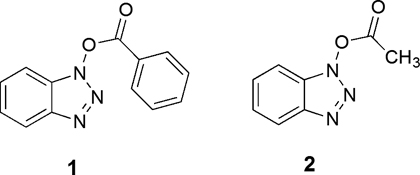
Isolable 1-(acyloxy)benzotriazoles 1 and 2 are useful reagents for the regioselective acylation of diols and deprotected carbohydrates. 1-(Acyloxy)benzotriazoles exist as a regioisomeric mixture of the O- and N-acylated forms in solution and in the solid state. 1-(Acyloxy)benzotriazole esters have also shown to be potent inhibitors of coronavirus cysteine proteinases.
CH13027Synthesis of a Thermostable Polymer-supported Strongly Basic Catalyst and its Catalytic Activity
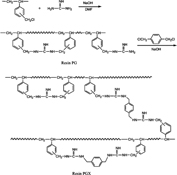
A novel strongly basic polymer-supported catalyst with a guanidine cross-linked structure has been synthesized, whose thermal stability is higher than the commercial resin 201. The thermal stability mechanism of the resin with a cross-linked structure is also demonstrated. The resin catalyzes Knoevenagel condensation reactions with high yields and can be reused for several cycles without losing efficiency.
CH13107Cetrimonium Nalidixate as a Multifunctional Inhibitor to Combat Biofilm Formation and Microbiologically Influenced Corrosion
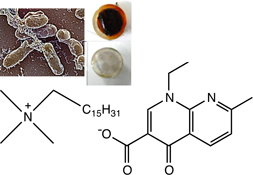
Cetrimonium nalidixate salt, when incorporated into a polyurethane coating, leads to complete inhibition of microbiologically influenced corrosion in the presence of several bacteria strains commonly found in marine environments.
CH13099Synthesis, CMC Determination, and Outer Sphere Electron Transfer Reaction of the Surfactant–Complex Ion, cis-[Co(en)2(4CNP)(DA)]3+ with [Fe(CN)6]4– in Micelles, β-cyclodextrin, and Liposome (Dipalmidoylphosphotidylcholine) Vesicles
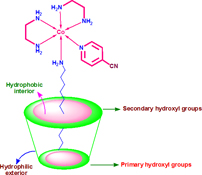
Outer sphere electron transfer rate constant between surfactant complex, cis-[Co(en)2(4CNP)(DA)](ClO4)3 with Fe(CN)6 4– increases with concentration of complex in its own self-micelles. Being a structure breaker β-cyclodextrin has decreased the rate. In liposome vesicles the rate constant is different at below and above phase transition temperature.
CH13111Polyoxometalate Insertion into Cu–pz Porous and Cu-bim Knighthead Coordination Polymers: [{Cu4(pz)5.5}{Cu2(2,2'-bim)3}0.5{P2W18O62}]·H2O

As a new 3D unit, two transition-metal complex (TMC) cations [Cu2(2,2′-bim)3]0.52+ and [Cu8(pz)11]0.54+ are introduced to [P2W18O62]6–, leading to assembly of the first Wells-Dawson type framework linked by TMC subunits, with cage-like and pillar bolt-type cations.
CH13150Synthesis and Characterisation of [(en)2Co]3+ Complexes Coordinated by Substituted Thiourea Ligands
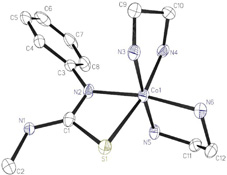
Unsymmetrical thiourea ligands coordinate in a bidentate manner through the thiourea sulfur atom and a deprotonated thiourea nitrogen atom to CoIII to produce linkage isomers. These isomers have been characterised using NMR and visible spectroscopies.
CH13125Release Kinetics of 6-Mercaptopurine and 6-Thioguanine from Bioinspired Core-Crosslinked Thymine Functionalised Polymeric Micelles
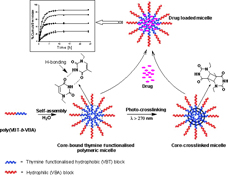
A bioinspired core-bound polymeric micellar system based on hydrogen bonding and photo-crosslinking of thymine has been prepared. The chemical loading and controlled release potential of these micelles were investigated using 6-mercaptopurine and 6-thioguanine. The results demonstrate that the drug release rates are affected by the hydrogen bonding in the core and can be controlled by changing the size and extent of photo-crosslinkage of the core.
CH13103Facile Domino Access to Unexpected Alkyl 3-Substituted-2-hydroxy-3,4-dihydro-2H-1,4-benzoxazine-2-carboxylates

An unprecedented domino alkylation-cyclization-air-oxidation of 2-halo-1,3-dicarbonyl compounds with 2-aminophenols promoted by caesium salts under aerobic conditions for the synthesis of novel alkyl 3-substituted-2-hydroxy-3,4-dihydro-2H-1,4-benzoxazine-2-carboxylates was developed.
CH13061Structural Diversity and Magnetic Properties of Five Cu(II) Complexes with Mixed Naphthalene-Based Dicarboxyl Tecton and Different N-Donor Co-Ligands
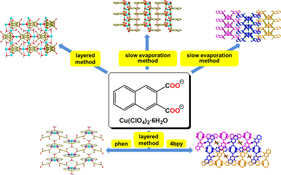
The construction of five magnetic CuII coordination polymers having two-dimensional layer and one-dimensional chain structures has been successfully achieved by using 2,3-naphthalenedicarboxylic acid (H2ndc), and their diverse supramolecular structures can be well regulated by incorporating different N-donor co-ligands and reaction conditions.
CH12521Efficient Synthesis of Novel Porphyrin Dimers with Versatile Linkers via Bis(dipyrromethanes) in an Excellent Mixed-Solvent

A general and efficient protocol has been developed to synthesise a series of novel porphyrin dimers with versatile aryl linkers via a simultaneous condensation-cyclisation-oxidation reaction of diverse bis(dipyrromethanes) with dipyrromethane-dicarbinol catalysed by indium(iii) chloride at room temperature in an efficient CH2Cl2 and CH3CN mixed-solvent. The reaction yields increased to 21–26 % based on LCMS and isolated yields were 13–19 % due to the use of the proper mixed-solvent.
CH13102Enhancement in Detection of Glucose Based on a Nickel Hexacyanoferrate–Reduced Graphene Oxide-modified Glassy Carbon Electrode
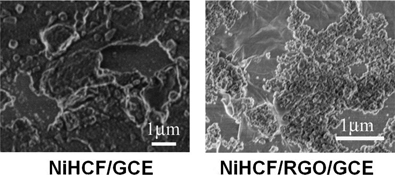
A nickel hexacyanoferrate and reduced graphene oxide-modified glassy carbon electrode was prepared by electrodeposition. It was found that this modified electrode had favourable and enhanced electrocatalytic ability towards glucose.
CH13143A Copper Cyanide Complex with Efficient Red Luminescence
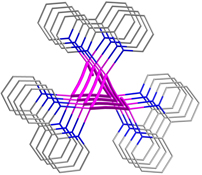
A novel copper cyanide complex Cu(CN)(bipy) with a special helical chain structure was synthesised, which efficiently emits red luminescence.



